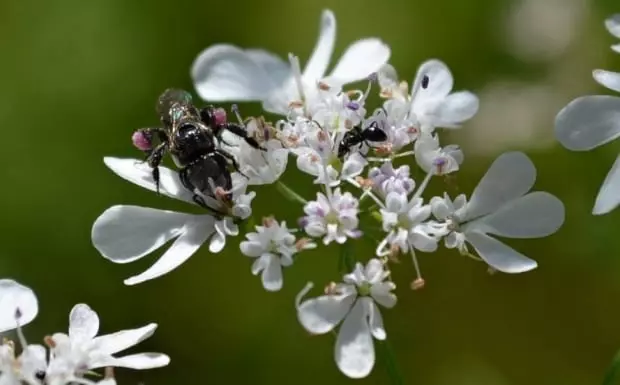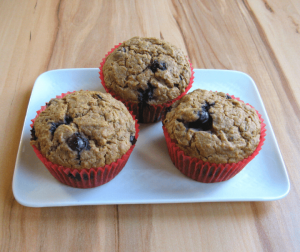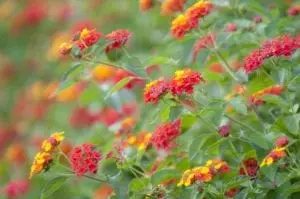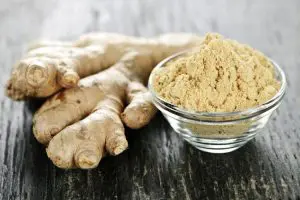With honey bees in dangerous decline around the world, how are crops going to be pollinated in the future? This is a major concern for scientists and farmers because if honeybees die out humans might starve!
Whilst honey bees have been declining year after year since the 1940’s a certain bee here in Australia has been growing in number – the Native Stingless Bee.

Native stingless bee on coriander flower (image above)
Because this bee doesn’t sting it’s totally safe to keep around kids and pets so they’re perfect for the backyard and due to the awesome job it does pollinating fruit and vegetables there has been a boom in native bee hive keeping around Australia.
Why we got rid of our native bee hives
So the questions is: Why did we get rid of all our hives?
Well, we did keep one hive but before I reveal what happened to that let me explain why the rest are gone…
Firstly, the hives weren’t ours anyway – they belong to my uncle who “grows” native bees as a hobby and to sell. And after 4 years he has decided to relocate his hives closer to where he lives rather than an hour up the road on our acreage.
Secondly, due to the regular rainfall we’ve had here over the past 18 months the back of our property has become a swamp making it difficult to work with the hives and regularly check them.
So, last week we got busy as bees and the big bee move began!
And just like that, the bees were gone…

My Uncle (Kevin) working on the native bee hives before the move (image above)
Relocating our native bee hive
But we did keep one! My uncle generously left us one of the best performing hives and this one hive will be enough to service our property.
However, it wasn’t as easy as simply moving the beehive to the new location because if we suddenly did that the bees would get lost/disorientated and the whole colony could die!
Therefore, we waited for the foraging bees to come back to the hive (bees return in the afternoon before dark) and my uncle sealed the hive entrance with a fine mesh then I could move the hive without any of the bees escaping.
They stayed in their solitary “bee” confinement (that was an awful dad joke) and then 7 days later I positioned the hive in a new spot near our vegetable garden and set them free!
Now they are happy and actively looking for food, cleaning out their hive, and establishing in their new location.

Last stingless native bee hive positioned in our kids playgym (image above)
Hopefully, they can remain here for many years to come – some natural native bee hives are known to be decades old – I know a hive at my childhood home is still going and would be at least 30 years old!
These bees will pollinate our self-sufficient property – the vegetable garden, the orchard, and that’s why I always let some of our crops go to seed not just so we can collect the seeds to grow more plants but so the bees can harvest the pollen for food.
Yes, we’re lucky here in Australia to have an alternative bee to the honey bee that helps with pollination although I must point out there are literally thousands of other native bees all around the world. Some are stingless and some sting.
Some live-in colonies like these and others are solitary (live on their own) many of these species can be encouraged to your garden through various means and I encourage you to research your native bees and help them to thrive also because if the honey bee goes we might need them even more then they need us…
Watch the video on Bees
Looking to buy stingless native bees?
If you are interested in buying native stingless bee hives my uncle does sell them and his contact details are:
Kevin Stiller, Brighton, QLD (in boxes)
Phone: 07 3869 3770
Email: kevinstiller@optusnet.com.au












